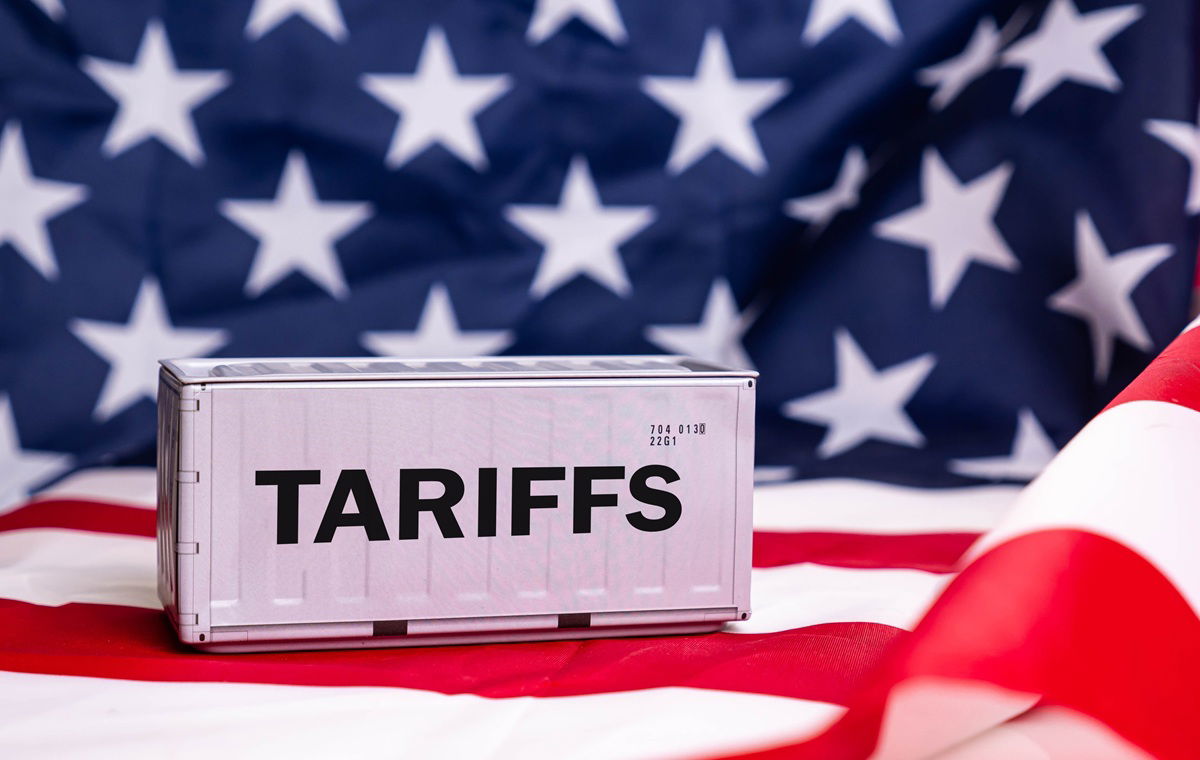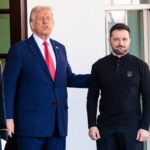Shipping container labeled “Tax” on US flag – Credit symbolizing the rising trade tension between the US and China: Shutterstock, Tama2u
Trade tensions between the US and China have just hit new highs after the White House confirmed this Tuesday that tariffs on Chinese imports would surge to at least 104% from Wednesday.
An announcement made by White House Press Secretary Karoline Leavitt shows a sharp escalation of President Donald Trump’s hard-line approach to international trade during his second term.
The move comes days after China announced it had imposed a 34% retaliatory tariff on US goods. In response, Trump added another 50% to the planned tariff hike, piling up a total of 84 people in new duties on the original increase. result? Total customs duties burden that doubles the previous rate.
Beijing wasted no time responding. China’s Commerce Department called the move “a mistake in a mistake” and has pledged further retaliation against US exports. Meanwhile, the American market responded quickly. The Nasdaq and the S&P 500 were soaked, but the Dow Jones were able to remain in positive territory for now.
Trump stands firmly as trade tensions between the US and China escalate
Speaking to reporters on Tuesday afternoon, Levitt said the tariff decision was made after China “chosen to double down” rather than stopping. “If a country like China thinks it can continue to abuse American workers, it’s making a mistake,” she said. “President Trump has a steel spine and he won’t break.”
When asked if there were any conditions Trump might consider reducing tariffs, Leavitt remained ambiguous. “The Chinese want to do a deal,” she said, “they just don’t know how to do that.”
The president first imposed a 10% blanket tariff on Chinese products in February, citing allegations of the country’s role in the illegal immigration and the fentanyl crisis. He doubled these fees last month. And with this week’s jump, he is now leading US-China trade tensions into a whole new territory.
World trade faces uncertainty amid rising US tariffs
China was the second largest source of US imports last year, sending over $439 billion in goods across the Pacific. In contrast, the US exported $144 billion to China. Analysts warn that this latest escalation could hit the domestic industry hard and cause layoffs on both sides.
And it’s not just China on the shooting line. Dozens of other countries, including EU members, are facing the same midnight deadline with new tariffs, some of which could be as high as 50%. Leavitt said talks with world leaders are ongoing, but Trump is unlikely to be upset.
“He hopes these tariffs will be enforced,” she said after speaking directly to the president. At the same time, she suggested that countries could still cast a “TaylorMade” deal if they wanted to come to the table. “But these are not Luck’s contracts,” she added. “Each of them will be custom fits.”
As the clock approaches the new tariff deadline, it is clear that it is not just about Trump’s trade strategy, but about attitude. It remains to be seen whether that attitude will lead to meaningful transactions or deeper global friction.








